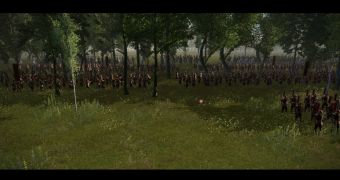Do gamers like being closer to total freedom or being guided by the benevolent hand of the developer? I have been playing quite a bit of the Total War series lately, focusing on Rome and on Shogun 2 mostly and I found myself asking this question quite a bit while comparing the two ways that the games approach the possible paths to battle.
Rome was a revolution for the franchise because it overhauled the strategic and turn-based section of the game, substituting the older determined province and move for one where the characters and armies were free to move around taking any path they liked to their objective.
In some ways the game was enhanced, because movement now had more strategic value, but in many ways veterans saw the openness of the game more as a problem because of the freedom which made it harder to force the enemy into decisive battles and the whack-a-mole problems that arose.
In Shogun 2 the strategic map remains open, but a lot of the freedom is gone and it seems to value to the experience and make it tougher for the player to progress.
The developers seem to have drawn a number of workable lines of attack between adjacent regions and then built the terrain map to make sure that at least one of them was pretty direct, with perhaps another one taking a more roundabout route to the same potential target.
In many ways it feels linear and restrictive, but at the same time it feels natural when taking into account the limitations to army movement and logistics that armies of the Medieval Japan period faced.
It also makes it easier for both the computer and the player to see and defend chokepoints that can keep whole regions safe as long as properly guarded and makes the entire game somewhat more predictable.
In the conflict between openness and direction, I think that Shogun 2 has made the right choice in limiting the freedom of movement for the player in order to bring some structure into the experience.

 14 DAY TRIAL //
14 DAY TRIAL //